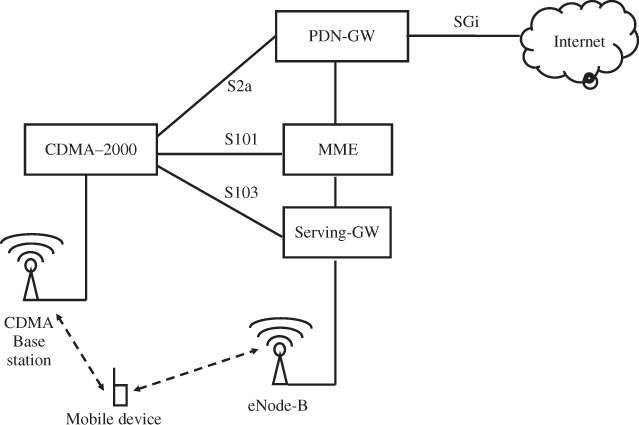4.10 Interworking with CDMA2000 Networks
In some countries, for example, the United States, some CDMA2000 network operators have chosen LTE as their next generation RAT. To allow roaming between the legacy radio access network and LTE, a functionality similar to that for GSM and UMTS described in Section 4.9 is required:
- cell reselection between LTE and CDMA2000;
- RRC connection release with redirect from LTE to CDMA2000;
- inter-RAT handover between LTE and CDMA2000.
To support the seamless roaming in the different access networks, 3GPP TS 23.402 [26] describes a number of new network interfaces to interconnect the two systems with each other. These are shown in Figure 4.23 and described in the following sections.
Figure 4.23 Interconnection of LTE to CDMA2000 networks.

4.10.1 Cell Reselection between LTE and CDMA2000 Networks
When the mobile device is in RRC Idle state, it can decide on its own as to when to move between the two radio access network technologies. On the LTE side, it is supported by neighbor cell information in the SIB-8 message.
To keep the IP address when changing between the two radio technologies and core networks, it is necessary that the PDN-GW is selected as a mobile IP home agent (HA) by the CDMA2000 network when the connection is first established. For this purpose, the S2a interface is used as shown in Figure 4.23.
When reselecting from LTE to CDMA2000, ...
Get From GSM to LTE: An Introduction to Mobile Networks and Mobile Broadband now with the O’Reilly learning platform.
O’Reilly members experience books, live events, courses curated by job role, and more from O’Reilly and nearly 200 top publishers.

